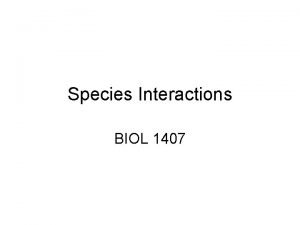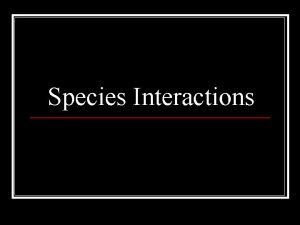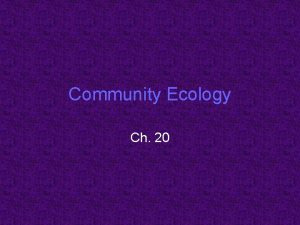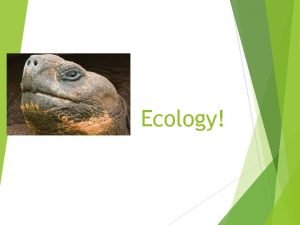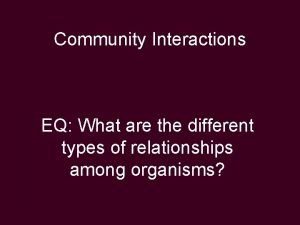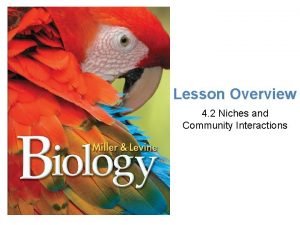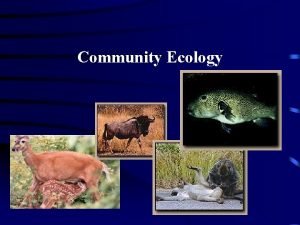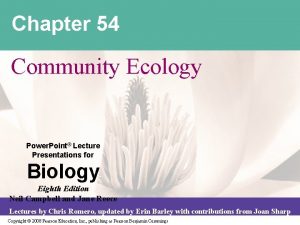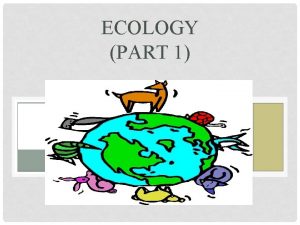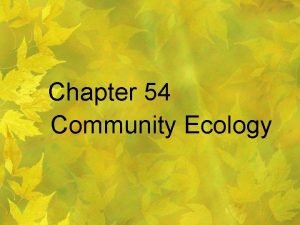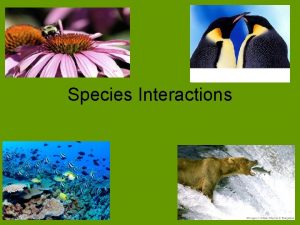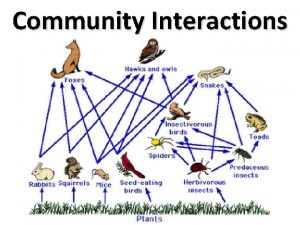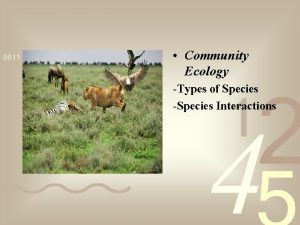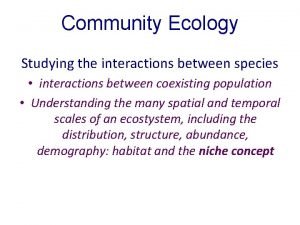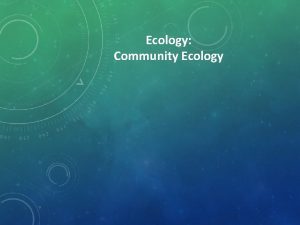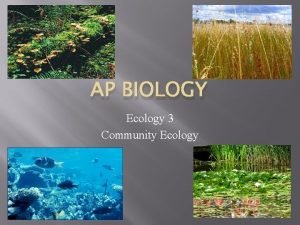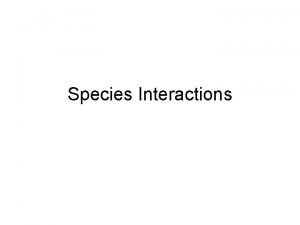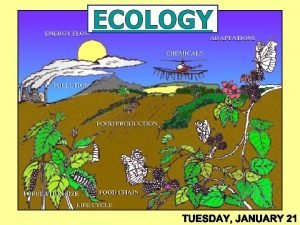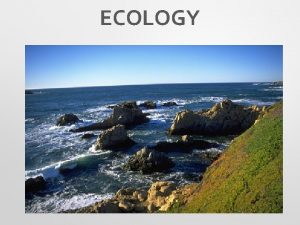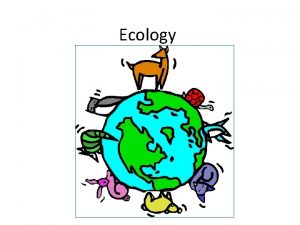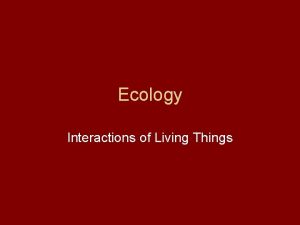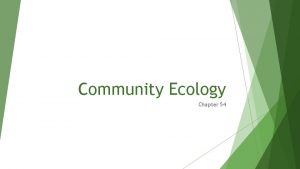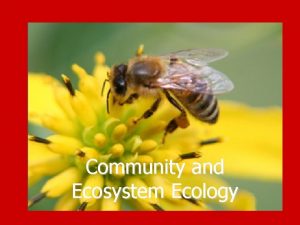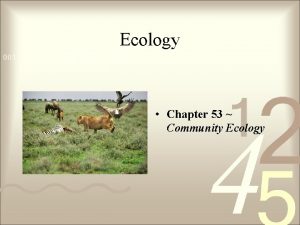Community Ecology Ch 20 20 1 Species Interactions




















- Slides: 20

Community Ecology Ch. 20

(20 -1) Species Interactions • 5 major types – Predation – Competition – Parasitism – Mutualism – Commensalism


Predation • 1 species benefits (predator) while the other species gets eaten (prey) • Adaptations: – Mimicry – Secondary compounds – Physical abilities

Predation (cont. ) • Mimicry: harmless species resembles a poisonous or distasteful species – Ex: king snake mimics poisonous coral snake • Secondary Chemicals: poisonous or bad-tasting chemicals made from metabolism – Ex: poison ivy/oak

Competition • Caused by niche overlap of 2 or more species • Can lead to: – Competitive exclusion – Character displacement – Resource partitioning

Competitive Exclusion • 1 species is eliminated due to competition for same limited resource – 2 barnacle species

Character Displacement • Evolution of anatomical differences that reduce competition – Darwin’s finches

Resource Partitioning • Species reduce their use of shared resource thus decrease competition – Warbler feeding

Symbiosis • Relationship b/w different species living in close contact w/ each other • 3 types: 1. Parasitism 2. Mutualism 3. Commensalism

Parasitism • 1 species benefits (parasite) while the other species is harmed (host) • 2 types: – Ectoparasite: external • Ticks, fleas, leeches – Endoparasite: internal • Tapeworms

Mutualism • Both species benefit from one another – Pollinators & plants

Commensalism • 1 species benefits while other is not affected – Cattle egrets & Cape buffalo

(20 -2) Properties of Communities • 3 community characteristics: – Richness: # of species it contains – Diversity: how common a species is – Stability: resistance to change • Richness improves stability

Species Richness Patterns • Communities closer to the equator have more species • Species-area effect: larger areas usually contain more species than smaller areas


Succession • Gradual, sequential re-growth of species in an area


2 Types of Succession • Primary: development of a community in an area that never had life before – Bare rock, sand dune – Extremely slow process • Secondary: change of community makeup after a disturbance – Farming, flood, fire – ~100 yrs to return

Key Terms • Pioneer species: predominate in early succession – Small, fast-growing, & fastreproducing – Ex: weeds, crabgrass • Climax community: community make-up that will last for a long time – Stable end result of succession
 Types of species interactions
Types of species interactions 5 major types of species interactions
5 major types of species interactions Section 20-1 review species interactions
Section 20-1 review species interactions Chapter 6 lesson 1 habitats niches and species interactions
Chapter 6 lesson 1 habitats niches and species interactions Types of parasitism
Types of parasitism Symbiosis and species interactions keystone webquest
Symbiosis and species interactions keystone webquest Keystone species define
Keystone species define 3 types of community interactions
3 types of community interactions Niches and community interactions
Niches and community interactions Keystone species plants
Keystone species plants Community definition ecology
Community definition ecology Community ecology
Community ecology Biological disturbance
Biological disturbance An organisms rank in a feeding hierarchy
An organisms rank in a feeding hierarchy Section 1 community ecology
Section 1 community ecology Chapter 5 evolution and community ecology
Chapter 5 evolution and community ecology Fig 52
Fig 52 Community level ecology
Community level ecology Chapter 5 evolution and community ecology
Chapter 5 evolution and community ecology Chapter 54: community ecology answer key
Chapter 54: community ecology answer key Chapter 5 evolution and community ecology answer key
Chapter 5 evolution and community ecology answer key
